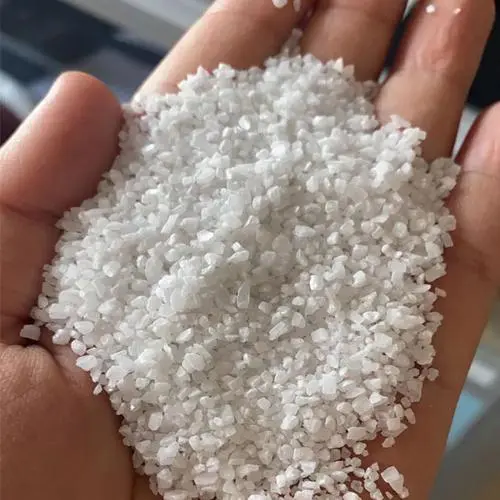
The Role of Red Iron Oxide in Enhancing Ceramic Properties and Applications
Red Iron Oxide Ceramics A Comprehensive Overview
Red iron oxide ceramics have garnered significant attention in recent years, owing to their unique properties and versatile applications. Composed primarily of iron oxide (Fe2O3), these ceramics present a vibrant red hue that is aesthetically appealing and practically advantageous. This article delves into the characteristics, production processes, applications, and future prospects of red iron oxide ceramics.
Characteristics of Red Iron Oxide Ceramics
Red iron oxide ceramics are distinguished by their excellent durability, high temperature resistance, and remarkable color stability. The vibrant red color is attributed to the specific oxidation state of iron in the compound, which absorbs certain wavelengths of light, making it an attractive choice for artistic applications as well as functional ones.
One of the most striking features of red iron oxide ceramics is their thermal stability. They can withstand extreme temperature variations without significant degradation, making them suitable for applications in high-heat environments. Furthermore, these ceramics exhibit low thermal conductivity, which is beneficial for insulating applications.
The mechanical properties of red iron oxide ceramics also contribute to their utility. They possess high compressive strength and hardness, which make them ideal for use in structural applications. Moreover, their chemical inertness ensures that they resist corrosion and degradation in harsh environments, contributing to their longevity.
Production Processes
The manufacturing of red iron oxide ceramics involves several steps, beginning with the sourcing of the raw materials. The primary material, iron oxide, is often derived from natural minerals or synthesized through chemical processes. Once the iron oxide is obtained, it is mixed with other additives and binders to enhance the final properties of the ceramic.
The next step involves shaping the mixture into the desired form. This can be achieved through various methods, including pressing, casting, or extrusion. After shaping, the ceramic undergoes drying to remove moisture, which can cause defects during firing. The firing process, a critical step in ceramics production, involves heating the shaped material in a kiln at high temperatures, typically between 1000°C and 1300°C. This process not only solidifies the structure but also facilitates the formation of the red iron oxide phase.
red iron oxide ceramics

Finally, the ceramics are often subjected to a glazing or coating process, enhancing their surface finish and providing additional protection against wear and environmental factors. This results in a product that is not only functional but also visually appealing.
Applications
The applications of red iron oxide ceramics are extensive. In the field of art and design, they are used in pottery, tiles, and decorative items, where their vibrant color enhances aesthetic appeal. The ceramics are also employed in the construction industry, particularly in roofing tiles, bricks, and wall claddings, owing to their durability and thermal properties.
In addition to artistic and construction applications, red iron oxide ceramics are finding their way into advanced technological fields. Their unique properties make them suitable for use in electronic devices and sensors, where stability and thermal resistance are crucial. The ceramics are also being explored for use in medical applications, such as bioactive materials that can interact with biological systems.
Future Prospects
The future of red iron oxide ceramics appears promising, given the ongoing research and development in material sciences. Innovations in production techniques aim to enhance the properties of these ceramics, such as improving their mechanical strength or reducing the environmental impact of their manufacturing processes. Furthermore, the potential for integrating nanotechnology into red iron oxide ceramics could open new avenues for their applications, particularly in fields like electronics and medicine.
The increasing demand for sustainable materials also presents opportunities for red iron oxide ceramics. As industries seek environmentally friendly alternatives, these ceramics can be produced from abundant natural materials, aligning with sustainability goals.
Conclusion
In conclusion, red iron oxide ceramics represent a fascinating intersection of aesthetic appeal and functional performance. Their unique properties, versatile production methods, and broad range of applications make them an important material in various industries. As research progresses and new applications are discovered, the future of red iron oxide ceramics is likely to be marked by innovation and growth, solidifying their place in the materials of the future.
Share
-
Premium Talcum Powder Enhanced with GPT-4 Turbo | Soft & Long-LastingNewsAug.02,2025
-
Fly Ash Solutions Enhanced by GPT-4 Turbo | Sustainable InnovationNewsAug.01,2025
-
Natural Premium Bentonite Cat Litter - Superior ClumpingNewsJul.31,2025
-
Premium Resin Coated Sand - High Heat Resistance CastingNewsJul.31,2025
-
High Quality Silicon Carbide Grit for Abrasive ApplicationsNewsJul.30,2025
-
High-Quality Ceramsite for Plants & Gardening | Lightweight PebblesNewsJul.29,2025






